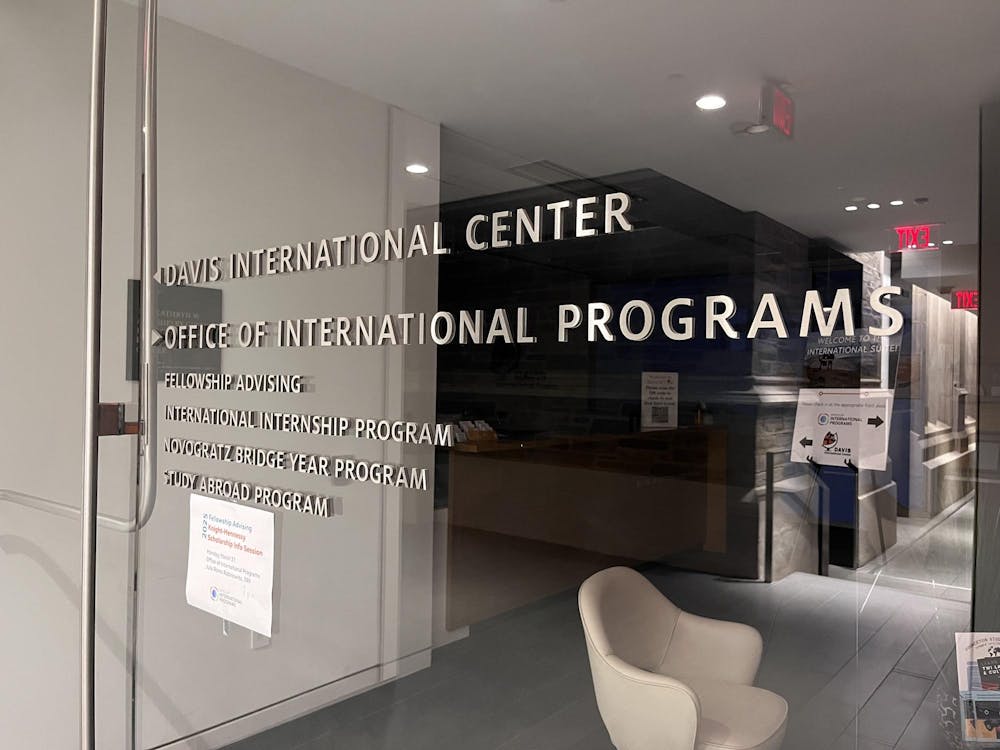More than 500 students picked up energy-efficient light bulbs on Friday at the Class of 2010's bulb exchange, an effort by class officers to help reduce the University's energy consumption.
Most University lighting has been switched to compact fluorescent lamp (CFL) bulbs over the past few years, according to the Facilities Department. The bulbs last 10 times longer than incandescent bulbs and are four times more efficient.
With dorms, lecture halls and eating clubs already using CFLs, the last step in distributing the bulbs across campus is getting students to change the bulbs in their personal lamps and other lighting fixtures, Class of 2010 president Connor Diemand-Yauman said.
Diemand-Yauman began planning the bulb exchange at the end of the last school year after visiting a friend at Yale and observing a similar university-sponsored program there. Friday's event was sponsored by the Office of Sustainability, and the bulbs were provided by the Facilities Department.
At the exchange, sophomore class officers and other members of the class distributed hundreds of CFL bulbs to promote awareness of the new technology.
The organizers explained that, over a CFL bulb's lifetime, it will emit 450 pounds less carbon dioxide than an incandescent bulb. By organizing the event, they hoped to distribute 3,200 bulbs to the student body, which will keep 1,440,000 pounds of carbon dioxide emissions out of the air.
The exchange received strong approval from students.
"I worked for an environmental company over the summer and actually did research on CFLs. When I head about this, I was really excited," Ann Gong '10 said.

Jing Lin '10 said that she thought the exchange would likely increase awareness among the student body. Students at the event said that if they were satisfied with the bulbs they received, they would purchase CFLs instead of incandescent bulbs in the future.
"Would I buy them for my home? Of course I would," Lin said.
The University has been modifying its buildings to make them more energy efficient for years. "We are constantly looking at new technologies," said Arthur Murphy, who has been in working on sustainability on campus for the Facilities Department.
These efforts have included installing occupancy monitors to automatically turn off the lights in empty rooms and installing energy-efficient lighting in dorms and offices.

Murphy admits that there must be a balance between cost and payoff for the University to adopt new technologies. Though CFLs are more expensive than incandescent bulbs, a Facilities survey of CFL lighting in Robertson Hall, the computer science building and Frist Campus Center revealed that the technology paid for itself in less than three years.
While the University examines new technologies, Diemand-Yauman plans to continue distributing CFL bulbs.
There will be another exchange later this week, and the organizers will distribute the remaining bulbs door-to-door.
Diemand-Yauman hopes that after this school year, the exchange will mainly target freshmen, allowing them to acquire CFLs and encouraging them to purchase CFLs instead of incandescents.
Since CFL bulbs contain trace amounts of mercury, they cannot be disposed of in the same way as incandescent bulbs, they need to be disposed of differently. While Facilities already has a program to recycle the bulbs, Connor-Diemand said that he plans on creating something similar for students.







